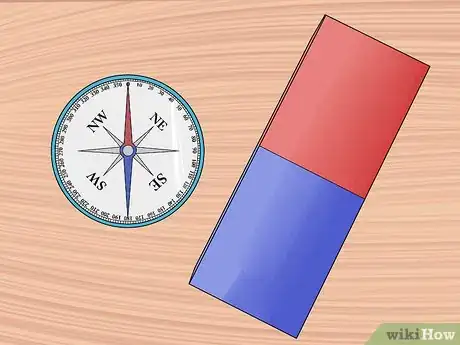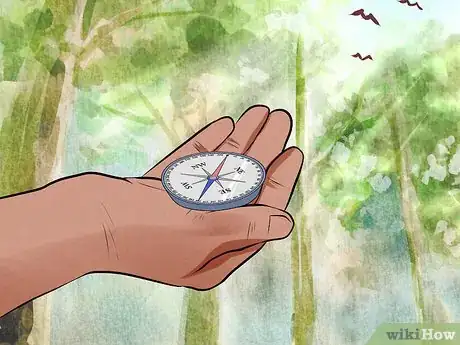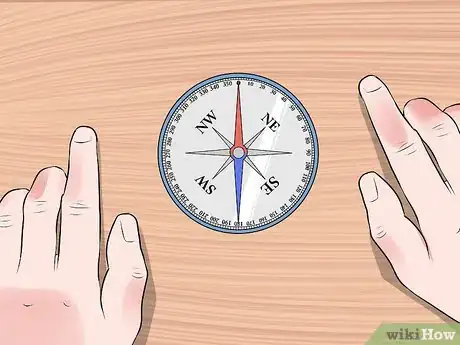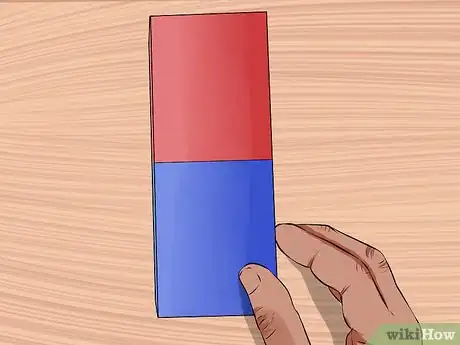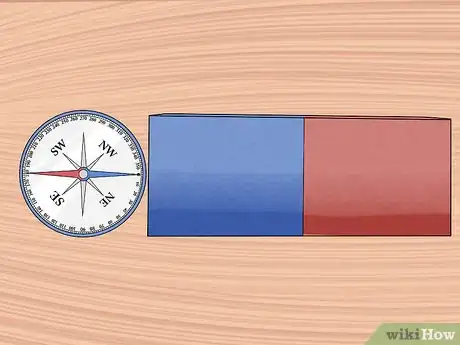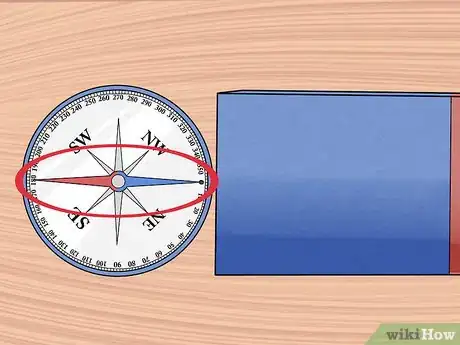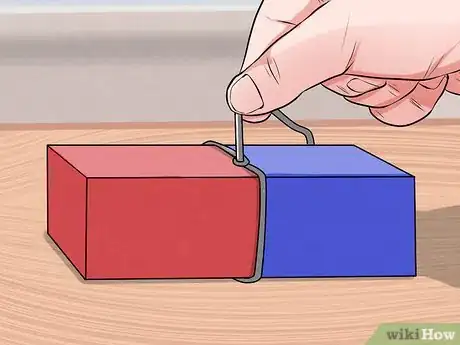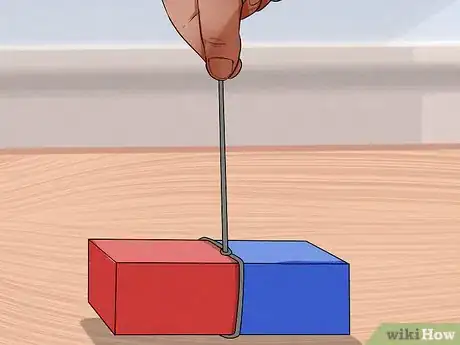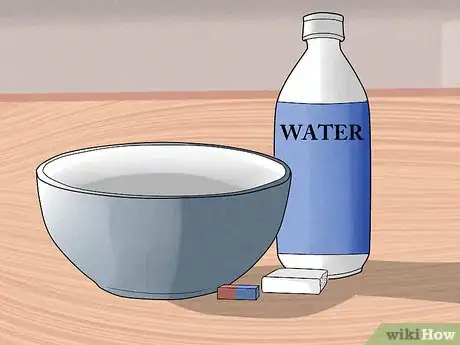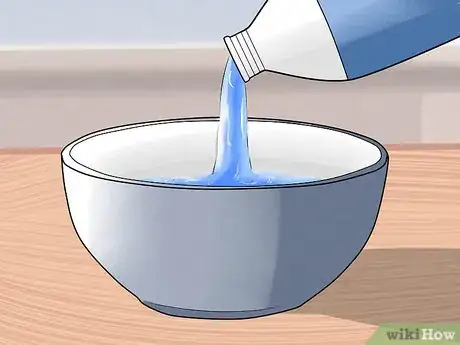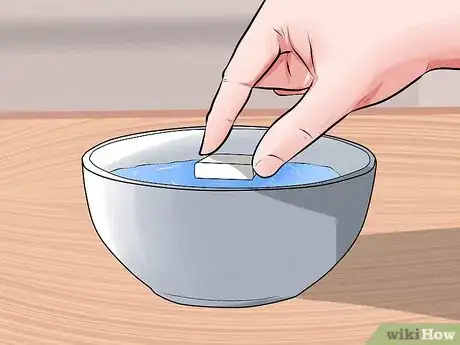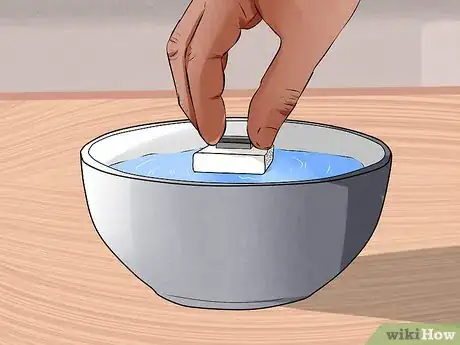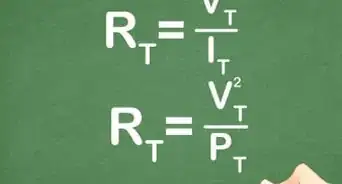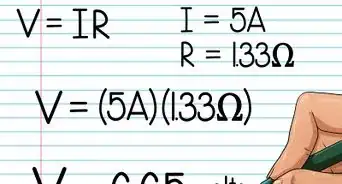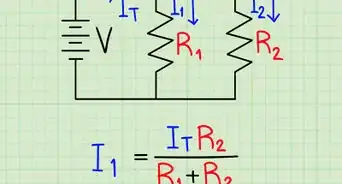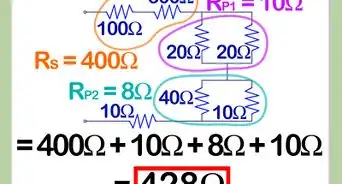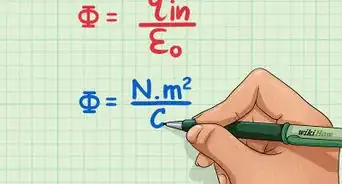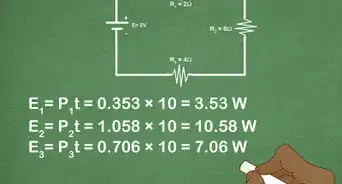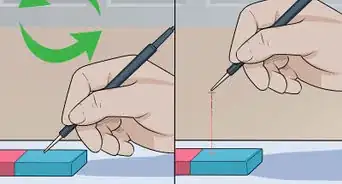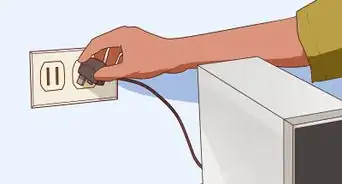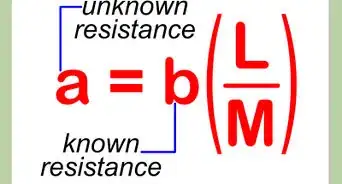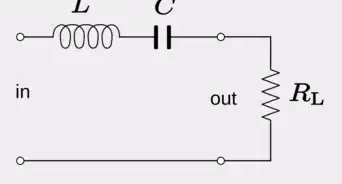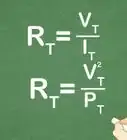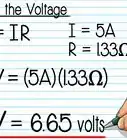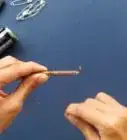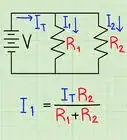This article was co-authored by Bess Ruff, MA. Bess Ruff is a Geography PhD student at Florida State University. She received her MA in Environmental Science and Management from the University of California, Santa Barbara in 2016. She has conducted survey work for marine spatial planning projects in the Caribbean and provided research support as a graduate fellow for the Sustainable Fisheries Group.
There are 9 references cited in this article, which can be found at the bottom of the page.
This article has been viewed 277,886 times.
You might have heard the phrase “opposites attract.” While perhaps not always the best advice for relationships, this cliché is the rule of thumb for magnet polarity. Since we inhabit a giant magnet (Earth), understanding magnet polarity on a small scale will help you understand the larger magnetic field that protects us from space radiation.[1] Whether you want to label your magnets for future use or want to complete a fun science experiment, here are some easy ways to determine the polarity of your magnets.
Steps
Using a Compass
-
1Collect your materials. You will need only a compass and a magnet. [2] Any type of compass will work, but a disk magnet or bar magnet will be the simplest type of magnets to use for this method.
-
2Test your compass. While the end of the compass needle that points North is usually the red end on a typical compass, it’s a good idea to check. [3] If you know where geographical North is from your current location, you can easily note which end of the compass needle points North.
- If you are not sure where your geographic North is, you can determine which end of the compass needle is the North end by going outside at noon, when the sun is at the highest point of the sky. Hold the compass flat in your hand with the South end of the compass nearest to your body.[4]
- Note the position of the compass needle. If you live North of the Earth’s equator, the North end of the needle will be pointing towards you and the South end of the needle will be pointing toward the sun. If you live South of the equator, the South end of the compass needle will be pointing towards you.[5]
Advertisement -
3Place your compass on a flat surface, such as a table. [6] Be sure that the surface is free of any magnetized or metal materials that could cause a false reading. Even objects like a keychain or pocket knife can interfere with the experiment.[7] You will notice that the North end of the compass needle is pointing to your geographical North.
-
4
-
5Bring your magnet next to the compass. With a disk magnet, you will need to stand the magnet on its side and hold it with your index finger so that one of the flat sides is facing your compass. [10]
- If you are using a bar magnet, place your magnet perpendicular to the compass, so that one end of the magnet is close to your compass.
-
6Look at the compass needle. Since the compass needle is a small magnet[11] , the South end will be attracted to the North pole of your magnet. Note that the blue end of the compass needle is South and the blue end of the magnet is North thereby attracting each other.
- If the North end of the compass needle is pointing toward your magnet, you have found the South pole of your magnet. Rotate the other side of your magnet toward the compass; the South end of the compass needle will now be pointing directly to the North pole of your magnet.[12]
Creating a Compass with Your Bar Magnet
-
1Find a length of string. You can use any type of string that may be around the house, such as scrap yarn or wrapping ribbon. Your string should be long enough to tie around your magnet and suspend it.
- A yard of string should be long enough in most cases. You can estimate yardage by holding the string in both hands. With your right hand, hold the string to your nose. Extend your left arm as far as possible. For most adults, the length of string between your left hand and your right hand is about a yard.
-
2Tie your string securely around your bar magnet. Be sure that the string is tied tightly so that the magnet does not slip out of your knot. Note that if you have a disk or sphere magnet, this method is not appropriate.
-
3Hold the string away from your body. Be sure that the magnet is free to rotate and does not come into contact with any impediments. When it stops spinning, the end that is pointing North is the North pole of the magnet. [13] You have now created a compass!
- This means that you will need to know which direction is north prior to completing the test. You can use a compass, or identify north based off of urban and topographical features in your area.
- Note the difference from the compass method, wherein the South end of the compass needle is attracted to the North pole of the magnet. When using a magnet as a compass, the North pole of the magnet will point North because what we call the North pole is more accurate the “North-seeking pole,” [14] which is attracted to the South pole of the earth’s internal magnet.
Floating Your Magnet
-
1Gather materials. This method requires a few basic household objects that you likely have on hand. If you have a small magnet, a piece of Styrofoam, water, and a cup, you can complete a fun experiment that will help you determine the polarity of your magnet.[15]
-
2Fill a cup, bowl, or small dish with water. You don’t need to fill your dish all the way, just enough so that your Styrofoam has enough water to float freely.
-
3Prepare your Styrofoam. The Styrofoam should be small enough to place in your water dish and a large enough to hold your magnet. If you have a large piece of Styrofoam, you can cut it to fit.
-
4Place your magnet on the Styrofoam and put it in the water. The Styrofoam platform will turn until the North pole of your magnet is pointing North. Check a map or use a compass to determine which way is north before you start.[16]
Community Q&A
-
QuestionHow can I find the north pole with a magnet?
 Community AnswerPlace the north end of one magnet near the magnet with unknown poles. If the north end repels the magnet, that side is the unknown magnet's north pole. This obviously only works if you know the polarity of one of the two magnets.
Community AnswerPlace the north end of one magnet near the magnet with unknown poles. If the north end repels the magnet, that side is the unknown magnet's north pole. This obviously only works if you know the polarity of one of the two magnets. -
QuestionGive a reason why attraction is not regarded as a reliable method of testing for polarity?
 Community AnswerAny ferro magnetic material will attract both ends of the compass; this will not reveal the polarity.
Community AnswerAny ferro magnetic material will attract both ends of the compass; this will not reveal the polarity. -
QuestionHow do I understand when a place is magnetic?
 Community AnswerEarth has a magnetic effect. A place can have a stronger magnetic effect, locally. If your compass points towards something other than north, it is being pulled towards the closer magnet.
Community AnswerEarth has a magnetic effect. A place can have a stronger magnetic effect, locally. If your compass points towards something other than north, it is being pulled towards the closer magnet.
Warnings
- Magnets can reverse the polarity of a compass. Make sure your compass is pointing North by removing it from any magnetic forces and checking that it still points North. [18]⧼thumbs_response⧽
Things You'll Need
- Compass
- String
- Styrofoam
- Container filled with water
- Magnet
References
- ↑ https://www.nasa.gov/magnetosphere
- ↑ https://www.youtube.com/watch?v=5I8gMmYLs30
- ↑ http://www.compassdude.com/compass-reading.php
- ↑ http://www.compassdude.com/compass-reading.php
- ↑ http://www.compassdude.com/compass-reading.php
- ↑ https://www.youtube.com/watch?v=5I8gMmYLs30
- ↑ http://www.compassdude.com/compass-reading.php
- ↑ https://www.youtube.com/watch?v=5I8gMmYLs30
- ↑ https://www.nde-ed.org/EducationResources/HighSchool/Magnetism/twoends.htm
- ↑ https://www.youtube.com/watch?v=5I8gMmYLs30
- ↑ http://www.livescience.com/32732-how-does-a-compass-work.html
- ↑ https://www.youtube.com/watch?v=5I8gMmYLs30
- ↑ https://www.kjmagnetics.com/blog.asp?p=which-pole-is-North
- ↑ http://www.animatedscience.co.uk/ks5_physics/general/Electricity%20&%20Magnetism/Magnetic%20Fields.htm
- ↑ https://www.kjmagnetics.com/blog.asp?p=which-pole-is-north
- ↑ https://www.youtube.com/watch?v=5I8gMmYLs30
- ↑ https://www.youtube.com/watch?v=5I8gMmYLs30
- ↑ http://cse.ssl.berkeley.edu/SegwayEd/lessons/exploring_magnetism/Exploring_Magnetism/s1.html
About This Article
The easiest way to determine the polarity of a magnet is to set the magnet on a flat surface so one of its ends is next to a compass. Then, check which end of the compass needle is pointing at the magnet. If it’s the North end, it’s pointing at the South pole of the magnet. If it’s the South end, it’s pointing at the North pole of the magnet. If you don’t have a compass, read on to learn how you can use styrofoam and water to find your magnet’s polarity instead!
